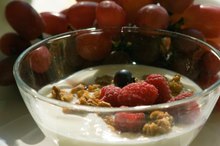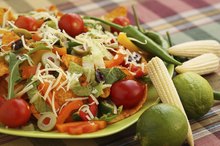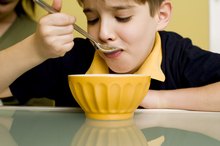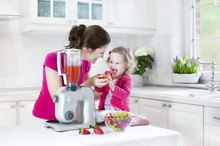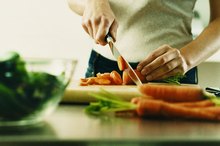What does fact checked mean?
At Healthfully, we strive to deliver objective content that is accurate and up-to-date. Our team periodically reviews articles in order to ensure content quality. The sources cited below consist of evidence from peer-reviewed journals, prominent medical organizations, academic associations, and government data.
- American Heart Association; How Do I Follow a Healthy Diet?; August 2010
- Weight-control Information Network; Take Charge of Your Health, A Guide for Teenagers; August 2009
The information contained on this site is for informational purposes only, and should not be used as a substitute for the advice of a professional health care provider. Please check with the appropriate physician regarding health questions and concerns. Although we strive to deliver accurate and up-to-date information, no guarantee to that effect is made.
Teenagers looking to stay healthy during summer vacation need menus that are heavy on nutrition and light on calories 3. When it’s hot and you’re busy with a summer job or fun, a good diet plan makes meal preparation quick and nutrition automatic. Skipping meals to save calories is a bad idea while you’re still growing. To get all the protein, vitamins, minerals, and healthy fats and carbs that you need, eat a low-fat, low-calorie dish from each food group at every meal.
Breakfast
Drink ½ cup of 100-percent fruit or vegetable juice for your morning vitamin C before a run or at breakfast 3. Enriched wheat, oat or corn cereals provide a full day’s supply of iron and important B vitamins per suggested serving. Add to cereal’s protein content with 1 cup of non-fat or 1 percent milk and a handful of nuts and raisins. Additional summertime choices include low-fat yogurt, whole wheat toast and scrambled eggs with tomato salsa. Don’t hesitate to eat well in the morning, but exercise portion control 3. The U.S. Department of Agriculture relates that eating breakfast is actually associated with weight loss and weight maintenance.
Lunch
How Can a Teenage Girl Lose 40 Lbs. In Six Months?
Learn More
To-go lunches help busy teens satisfy midday hunger to prevent overeating later in the day. Remember to visit all the food groups, including some protein, grain and dairy foods, and vegetables and fruits, if you can. Fill a chickpea hummus and pita sandwich with tomatoes, cucumber slices and plain fat-free yogurt. Eat tuna fish on whole grain crackers or lean deli ham or turkey breast in a whole wheat wrap. If you eat out, the American Diabetes Association recommends bean burritos, soft tacos, veggie pizza and green salads without too much dressing. Drink low-fat milk with your meal.
- To-go lunches help busy teens satisfy midday hunger to prevent overeating later in the day.
- If you eat out, the American Diabetes Association recommends bean burritos, soft tacos, veggie pizza and green salads without too much dressing.
Dinner
Growing teenagers need the protein, iron and B vitamins in fish, beans, lean meats and whole grains. These foods are the basis for light summer meals when you limit portion sizes 3. If you eat out and order more than the recommended 3 oz. of fish or meat, take some home. Limit your fat and calorie intake and keep your meals healthy by avoiding fried foods, requesting sauces and dressings on the side and by topping baked potatoes and burritos with salsa instead of butter, sour cream or guacamole. Make big salads at home out of fresh mixed greens and a variety of vitamin-rich vegetables.
- Growing teenagers need the protein, iron and B vitamins in fish, beans, lean meats and whole grains.
- Limit your fat and calorie intake and keep your meals healthy by avoiding fried foods, requesting sauces and dressings on the side and by topping baked potatoes and burritos with salsa instead of butter, sour cream or guacamole.
Snacks
Meal Plan With a Daily Workout Routine
Learn More
Instead of loading up on calories from sweets or fatty snacks, add fiber, vitamins and minerals to your daily totals with healthy snacks 3. The fiber in 1 1/2 oz. of nuts, ¼ cup of raisins, ½ cup of carrot and celery sticks, or a piece of fruit will fill you up as you add important vitamin and mineral content to your diet. Drink a glass of milk to help you achieve 100 percent of your calcium daily value.
- Instead of loading up on calories from sweets or fatty snacks, add fiber, vitamins and minerals to your daily totals with healthy snacks 3.
Related Articles
References
Writer Bio
Nancy Clarke began writing in 1988 after achieving her Bachelor of Arts in English and has edited books on medicine, diet, senior care and other health topics. Her related affiliations include work for the American Medical Association and Oregon Health Plan.
